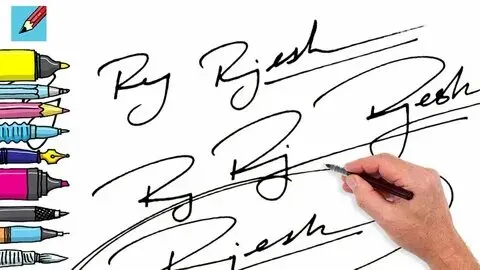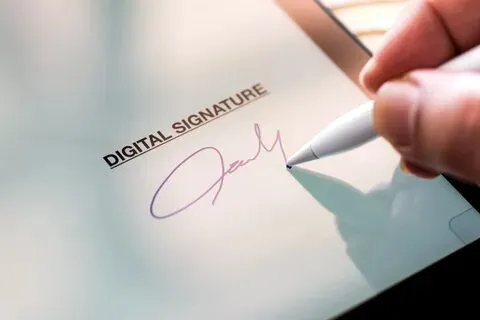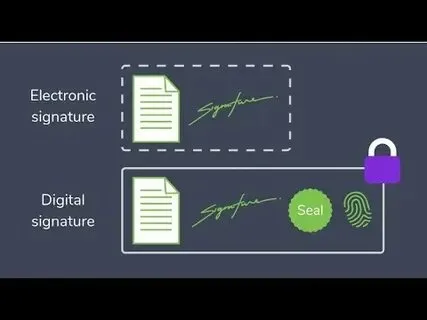To check if a signature is real or printed, tilt the paper in the light. A real one has pen pressure, small ink marks, and slight texture. A printed one looks flat, smooth, and has no pen depth or ink shine.
In this guide, you’ll learn easy, clear ways to check a signature without needing special tools. Save time, avoid scams, and be sure of what’s real and what’s not.
How Professionals Authenticate Signatures
For checking stroke pressure, pen lifts, and texture, experts use magnifiers, UV lights, and ink analysis. To confirm whether a signature is real or fake, they compare it with known samples and look for natural writing flow.
Also read must: How To Start A Print Shop- Start Printing Now!
Forensic handwriting analysis
Experts study writing style, pressure, spacing, and flow. They compare with known samples to detect if the signature was naturally written or mechanically produced.
Chemical ink testing
Special tools examine ink composition to check age, type, and origin. This helps confirm if the ink matches the claimed time and writing method.
Document dating techniques
Professionals test paper, ink, and stamp age using lab methods. It reveals if a signature matches the document’s timeline or was added later.
Certification processes
Trusted authorities issue a certificate after deep signature checks. This includes visual, chemical, and expert analysis, proving the signature’s authenticity for legal or collectible use.
Book Collecting Guide

Start by looking for first editions, signed copies, or rare prints. Make sure the item is in good condition, authentic, and has a market value. Avoid fake signatures by learning how to spot real ones.
Just added to your cart
You’ve successfully added the item to your cart. Review product details, check authenticity if signed, and continue shopping or proceed to secure checkout when ready.
The Difference Between “Autograph” and “Signature”
An autograph is a person’s handwritten name often given as a keepsake, while a signature is a unique, official mark used to verify identity on legal or formal documents. Autographs are casual; signatures are legally binding.
Steps to Authenticate a Signature: Autograph Authentication Guide
To authenticate a signature, compare it with known genuine samples, check ink and paper age, look for natural pen pressure and flow, verify the signer’s habits, and consult experts if needed to ensure its authenticity confidently.
Also read must: How Much Is Metal 3d Printer-Find Best Deal!
Thanks! You’ll be hearing from us soon
We appreciate your message and will review it carefully. Our team will contact you shortly with a clear response or next steps. Meanwhile, feel free to reach out if you have questions—your satisfaction is our priority.
Key Differences Between Real and Printed Signatures
The signature of an authentic individual shows natural pen pressure, slight variations, and fluid strokes, which prove the authenticity of the signature. The lack of these details in printed signatures makes them easier to copy and harder to legally verify.
Becoming Your Own Autograph Expert

Learn to spot real autographs by studying signature styles, comparing known examples, age of ink and paper and natural flow of writing. Don’t rely on others. Practice observation and research to identify autographs yourself.
Ready to Spot the Real Deal?
Look for natural pen strokes, consistent pressure and unique style in signatures. Don’t look for copies that are too perfect or flat. Trust your observation, compare with verified examples and use basic checks to identify autographs every time.
Professional Autograph Authenticators: Who to Trust and What It Costs
Trust well-known authenticators with proven expertise and positive reviews. Fees vary but usually range from $50 to several hundred dollars, depending on item value and service depth. Choose experts who provide certificates and clear, honest evaluations.
Tools You Can Use for Verification
Use magnifying glasses, UV light and digital microscopes to examine signatures up close. Compare with trusted samples and use forensic ink and paper testers. These tools will help spot forgeries by revealing hidden details and inconsistencies.
Magnifying glass
A magnifying glass will reveal fine details, pen strokes and inconsistencies in signatures that the naked eye can’t see, for verification.
UV light
UV light will reveal hidden inks, alterations, or paper changes invisible in normal light, to detect forged or tampered signatures.
Microscope or jewelers’ loupe
These tools will give you high magnification to examine ink flow, pressure marks and paper texture up close, to confirm a signature
Smartphone camera (zoom feature)
You can use your smartphone’s zoom to examine signatures up close, compare strokes and spot unusual patterns or flaws easily.
Can Printed Signatures Be Legal?

Yes, printed signatures can be legal if accepted by the involved parties or under electronic signature laws. However, they may lack security and authenticity compared to handwritten signatures, so verify their acceptance carefully in official or legal matters.
Common Situations Where People Fake Signatures
People fake signatures on legal documents, checks, contracts and permission slips to commit fraud, avoid responsibility or get unauthorized benefits. So verification is essential to avoid financial loss and legal trouble.
Also read must: Diamond Tip 3d Printer Nozzle-Enhance Your Nozzle!
When to Ask an Expert for Help
Consult an expert when a signature’s authenticity is doubtful, stakes are high, or legal proof is needed. Experts ensure reliable verification, protect your interests, and prevent costly mistakes in important documents or collectibles.
Forensic handwriting experts
Experts analyze handwriting details to confirm signature authenticity, detecting forgeries with scientific methods to ensure trust in important documents and autographs.
Certificate of authenticity (COA) for autographs
A COA proves an autograph is genuine, issued by trusted authorities to protect buyers and maintain the item’s value and credibility.
Legal document verification
Verification ensures signatures on legal papers are real, preventing fraud and protecting all parties involved in contracts or agreements.
Faqs
How can you tell if a signed print is real?
Check for ink texture, signature pressure, and authenticity certificates to confirm if a signed print is real.
Is there an app that can identify autographs?
Yes, some apps use AI to analyze autographs, but expert verification is still more reliable for accuracy.
How do I find out what my signature is worth?
You can find out what your signature is worth by consulting an autograph expert or checking recent sales of similar autographs online.
Are signatures worth money?
Yes, signatures can be valuable depending on the signer’s fame, rarity, and condition.
How do I know if my signature is good?
A good signature is clear, consistent, and unique, reflecting your style confidently.
conclusion
Understanding signatures and their authenticity is important to avoid fraud and protect value. By learning how to spot real versus fake signatures, knowing when to seek expert help, and using the right tools, anyone can become confident in verifying autographs. This knowledge saves time, money, and builds trust, making autograph collecting safer and more enjoyable for everyone.
